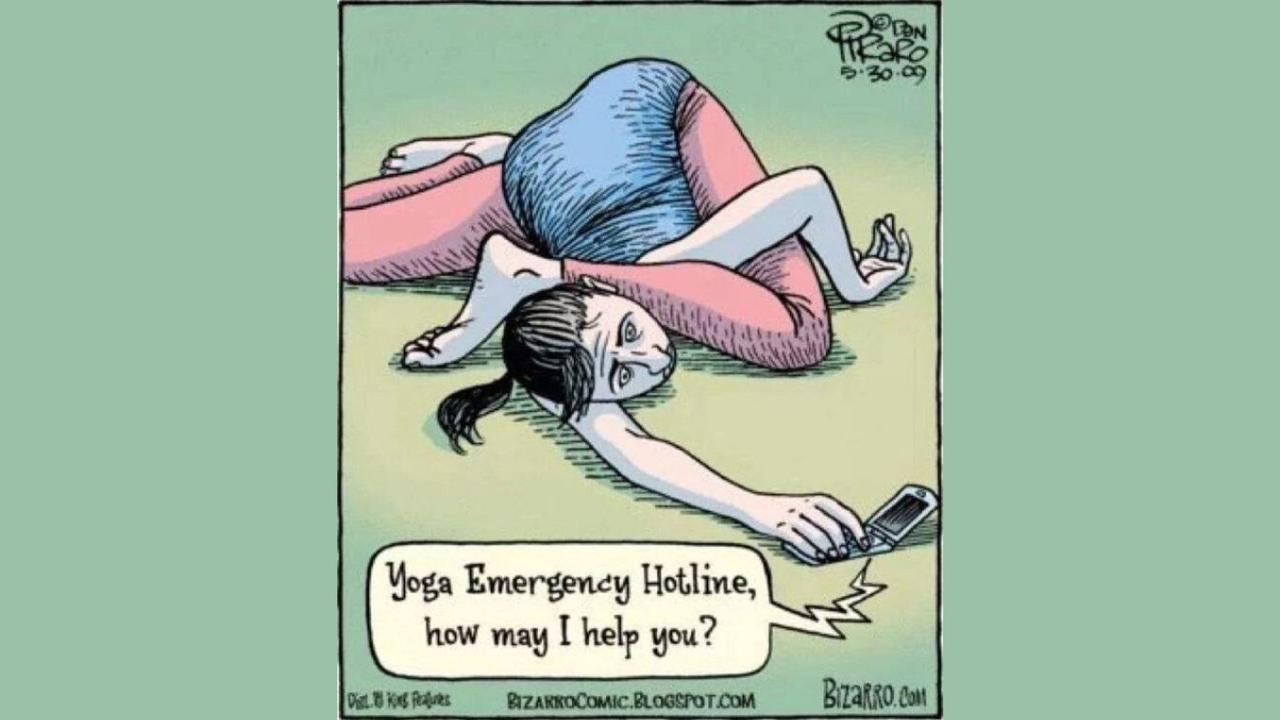It’s More Than Physical: Working with Yoga-Related Injuries, Part 2
Mar 21, 2018
Here's last week's part 1 on the topic of yoga-related injuries that addresses common causes of yoga-related injuries and tips to avoid them.
Thanks to research and investigation, not to mention the woefully infamous 2012 New York Times headline, Can Yoga Wreck Your Body?, the conversation around yoga-related injuries has greatly expanded over the past several years. Notably, through Matthew Remski’s WAWADIA project, many long time practitioners are now sharing stories that document and explore the multi-layered and often nuanced psychosocial and cultural dynamics at play in both acute and chronic yoga-related injuries.
What to do if you get injured during practice
It seems obvious, but I’ll say it anyway - stop and rest! Lying on your back with your knees bent is usually a good, all-around resting pose. Breathe gently if possible, exhaling through the mouth to soothe and relieve. Ask for assistance and do whatever is needed to take care of yourself right away.
Always communicate with your teacher if you experience pain in a pose or get injured during a class. A safe practice atmosphere includes feeling welcomed to share whatever does not feel right in your body, especially physical pain and injury. This needs to be met by your teacher with respect and attention to your immediate concerns for support and safety.
Again, to state what might be evident: Get a clear medical diagnosis and the necessary therapeutic, and perhaps medical, attention your situation requires as soon as you can.
After you’ve attended to your immediate needs, take time to reflect on what happened as objectively as possible. If the injury happened while you were practicing on your own, can you pinpoint the movement or action when you first felt pain? Try to become aware of what you were doing that caused it. Be as specific as you can. Then, inquire as to what actions or alignments will be healing as you move forward. Ask a teacher you trust for guidance and do your own research and exploration in practice.
If the injury happened in a class setting, the ask yourself:
- What caused it? Was it a particular instruction or even physical adjustment that led to the injury?
- Was it how I listened to, interpreted or implemented a particular instruction?
- Was I overdoing it?
- What was my internal reaction to the injury?
- What happened after? How did the teacher respond? Respectfully? Defensively? Not at all?
Consider your practice environment:
- Do you feel safe?
- Do you feel seen?
- Do you feel respected?
- Are your encouraged to attune to and respect your body’s limits, even while working deeply and intensely?
- Do you feel a sense of competition in class? If so, examine it. Is it your own tendency? Is it somehow encouraged by the setup of the room, the use of mirrors, your teacher’s attitude, the style you practice or other aspects of the practice atmosphere?
In my case, my feelings of shame and embarrassment in my knee getting stuck during the advanced practice that I shared last week was a big warning sign that I didn’t feel safe and respected. I needed to do the inner work of looking at the reasons behind that. These included old feelings of not fitting in, unworthiness, and insecurity about my body. I also needed to take a good hard look at the outer environment of the particular yoga community I was part of and acknowledge that there were also external factors, including the attitude of the teacher, that subtly encouraged my inner response.
Cultivating Ahimsa
Ahimsa, Non-harming, is one of the basic tenets of yoga practice. We can use ahimsa as a framework for approaching our experience of yoga in general, and working with injuries more specifically. Consider how you apply and practice ahimsa. It might show up as being super vigilant to be aware of and attend to any physical vulnerability during practice, or using the quality of your breath in asana to soften a tendency to overwork or push yourself past healthy physical limits. Ahimsa can be practiced in more subtle ways too, like committing to an inner attitude of self-compassion during yoga and finding ways to remember and practice it.
‘The yogi is someone who uses everything to her advantage.” Unknown
My point in offering you all these questions is to encourage you to use your injury and the circumstances surrounding it – how it happened and why it happened - as an opportunity to learn about yourself, reflect on your practice, and examine the psychological or emotional undercurrents that may have contributed.
Sometimes this means rethinking the poses you usually do or even the style you usually practice. Since many injuries can come from overdoing it in some form you may need to re-evaluate how you are practicing and be open to the possibility that what once served is no longer optimal for you. Since the body is always changing, our needs are always changing as well. It may be time for a shift in how, where or with whom you practice.
You might also discover that you are really well supported in your practice with a generous, responsible and knowledgeable teacher who can help you work through your injury and an uplifting community of fellow students bolstering your growth.
Whatever the outcome of your reflection, using an injury as an opportunity for learning and growth will make you a more responsible, informed and self-reflective practitioner. Not only will your individual experience of yoga deepen and evolve from this work, but you’ll also be helping to create and uphold a yoga culture where qualities like respect, compassion and integrity can thrive.
